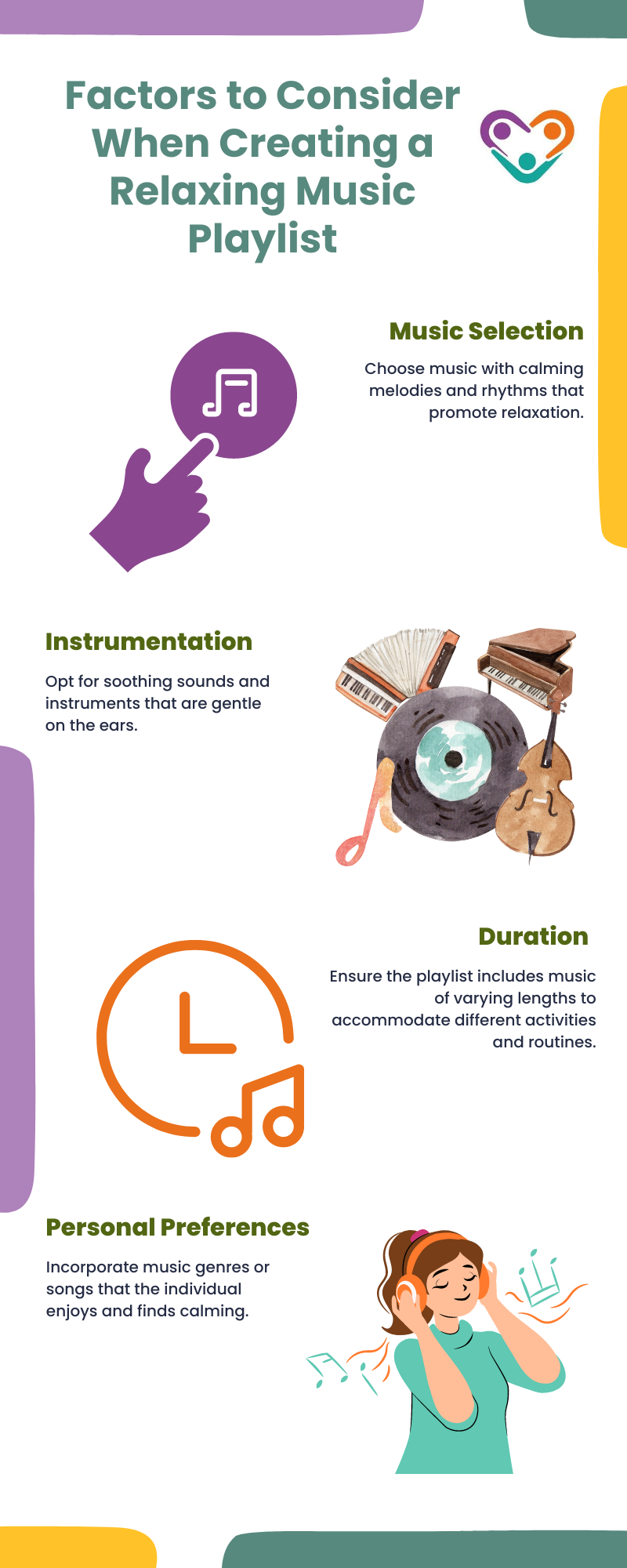
Table of Contents
Imagine a world where soothing melodies wash over you, gently easing the mind and calming the spirit. For many, music serves as a refuge from the chaos of daily life, a source of comfort and tranquility.
This is especially true for individuals on the autism spectrum, who often experience heightened sensitivity to sensory inputs. Relaxing music can create a peaceful atmosphere, offering a safe space for emotional expression and connection.
Understanding how relaxing music influences those with autism reveals its potential as a powerful tool for promoting relaxation, enhancing focus, and supporting emotional well-being.
Impact of Music on Autism
To learn about the impact of music on individuals with autism, we have to understand how music can influence mood and behavior. Additionally, tailoring music to meet the specific needs of individuals with autism plays a crucial role in reaping the benefits of relaxing music therapy.
How Music Can Influence Mood and Behavior
Music has a profound effect on mood and behavior, especially in individuals with autism. It can evoke emotions, calm the mind, and even improve social interactions.
For individuals on the autism spectrum, music can serve as a powerful tool for self-expression and communication, providing a non-verbal channel to express feelings and thoughts.
Research has shown that certain types of music can help with emotional regulation, reduce anxiety, and promote relaxation in individuals with autism. Melodies with slower tempos and gentle rhythms have a calming effect, while uplifting tunes can boost mood and motivation.
Understanding the preferences of the individual and their response to different musical stimuli is key to harnessing the therapeutic benefits of music in autism.
Importance of Tailoring Music for Individuals with Autism
When incorporating music into the daily routine of individuals with autism, it is vital to tailor the music to suit their unique sensory sensitivities and preferences. What may be soothing for one individual could be overwhelming for another. Therefore, personalized playlists that reflect the individual’s sensory needs and emotional responses are invaluable.
It’s essential to consider factors such as volume, tempo, instrumentation, and genre when selecting music for individuals with autism.
Soft instrumental music, nature sounds, or lullabies are often well-received and can create a peaceful environment for relaxation and sensory regulation. By customizing the music to align with the individual’s sensory profile and emotional state, caregivers and individuals with autism alike can experience the full transformative power of music therapy.
Characteristics of Relaxing Music
Exploring the essential elements of relaxing music tailored for individuals with autism, it’s crucial to focus on creating an environment of tranquility and comfort. Two key characteristics of relaxing music include calming melodies and rhythms, as well as soothing instrumentation and soundscapes.
Calming Melodies and Rhythms
Relaxing music for individuals with autism often features calming melodies and rhythms that promote a sense of peace and relaxation. These melodies are typically slow-paced and gentle, avoiding sudden changes or loud, jarring sounds that can be overwhelming for individuals with sensory sensitivities.
The repetitive nature of the melodies and rhythms provides a soothing and predictable structure that can help regulate emotions and reduce anxiety.

Soothing Instrumentation and Soundscapes
In addition to calming melodies and rhythms, the instrumentation and soundscapes used in relaxing music play a vital role in creating a peaceful auditory experience for individuals with autism.
Soft and gentle sounds from instruments like piano, guitar, flute, or ambient nature sounds are commonly incorporated to evoke a sense of serenity. The overall sound environment should be free from harsh or sharp tones, aiming to provide a comforting and harmonious backdrop for relaxation.
How to Incorporate Relaxing Music into Daily Routine
Integrating relaxing music therapy into the daily routine can have a profound impact on individuals with autism, providing them with a source of comfort and tranquility. By incorporating music during calm-down times and creating personalized playlists, caregivers and individuals with autism can harness the therapeutic benefits of music to promote relaxation and reduce stress.
During moments of heightened stress or sensory overload, music can serve as a powerful tool to help individuals with autism regulate their emotions and find a sense of calm.
Using music with slow tempos, gentle melodies, and soft instrumentation can help to create a serene atmosphere conducive to relaxation.
Additionally, incorporating familiar or preferred music can enhance the effectiveness of this relaxation strategy, as it can evoke positive emotions and feelings of comfort.
One effective way to integrate relaxing music into daily routines is to curate a personalized relaxing music playlist tailored to the individual’s preferences and sensory needs. Creating a playlist allows caregivers to select music that resonates with the individual, offering a source of comfort and relaxation at any time.
When creating a relaxing music playlist for individuals with autism, consider the following factors:

Customizing a relaxing music playlist to suit the unique preferences and sensory sensitivities of an autistic individual helps caregivers provide a comforting and therapeutic outlet for relaxation and emotional regulation.
Effective Ways to Introduce Relaxing Music
Introducing relaxing music to individuals with autism can be a beneficial way to promote calmness and reduce stress. It is essential to approach this process with sensitivity and consideration for each individual’s preferences and sensitivities.
Here are two effective methods to introduce relaxing music to individuals with autism:
Gradual Exposure to Different Sounds
To introduce relaxing music to individuals with autism, it is important to start with gentle and familiar sounds. Begin by playing short snippets of calming music at a low volume to gauge their initial reactions. Slowly increase the duration and volume as they become more comfortable and responsive to the music.
It is beneficial to expose individuals to a variety of musical styles and genres to identify what resonates best with them. Some individuals may prefer instrumental music with soft melodies, while others may find comfort in nature sounds or ambient music.
Observing their reactions and adjusting the music selection accordingly can help create a personalized and engaging listening experience.
Finding the Right Volume and Environment
Creating a peaceful and sensory-friendly environment is crucial when introducing relaxing music to individuals with autism. Ensure that the volume of the music is appropriate and not overwhelming for them.
Experiment with different volume levels and observe their reactions to determine the optimal sound level that promotes relaxation without causing distress.
Select a quiet and comfortable space for listening to music, free from distractions and loud noises. Creating a designated relaxation area with calming decor, such as dim lighting or soft cushions, can enhance the overall listening experience. Consistency in the environment can help individuals associate the space with relaxation and create a sense of comfort and security.

Conclusion
Relaxing music can be a powerful tool for individuals with autism. It creates a calming environment that helps reduce anxiety and improve focus, making everyday challenges a little easier to manage. By incorporating soothing sounds into their routines, families and caregivers can support their loved ones in finding peace and joy.
Ultimately, understanding the connection between autism and relaxing music opens up new pathways for emotional well-being, which enhances the quality of life for many. If you are seeking specialized support in this area, consider exploring our ABA services in New Jersey, Georgia, Indiana, and New York. At Golden Care Therapy, we are committed to helping individuals on the autism spectrum thrive through personalized approaches and expert guidance.
Don’t hesitate to contact us today to discover how we can support you or your loved ones on this journey.
Sources:
- Disability Rights in Indiana’s Device Policy Shift - October 17, 2024
- Indiana’s Boys & Girls Clubs Partner with UChicago - October 17, 2024
- Navigating Autism in Indiana’s Education System - October 17, 2024
